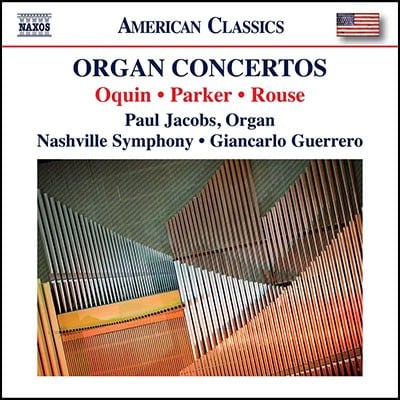0.0.0.bcl.0.dbn-4.2.3.1-timp.perc(3):2susp.cym/SD/xyl/cyms/tam tam/BD/glsp-org-strings
Abbreviations (PDF)
Boosey & Hawkes (Hendon Music)
I completed my Organ Concerto on June 23, 2014. Composed for organist Paul Jacobs, to whom it is dedicated, the work was commissioned by a consortium of the Philadelphia Orchestra, the Los Angeles Philharmonic, and the National Symphony Orchestra.
Devising a structure for each of my works is always at the head of my to-do list each time I begin to plan a new piece. Often in my symphonies and concerti I have chosen a form other than the "standard" one (i.e., four movements for symphonies, three for concerti). This is not due to any sense of dissatisfaction for those standard forms but rather reflects my desire to try new things.
However, sometimes those standard forms seem to be just the right ones, and that is the case with my Organ Concerto: a fast first movement, a slow second movement, and a fast finale. There is no programmatic content in this work, though of course I am always trying to express emotional states. In this concerto, as in so many of my scores, the language ranges from a consonant one to a more dissonant one, though I hope that the dissonance level is never so high that it prevents me from pivoting convincingly into a more tonal harmonic world.
Certainly the concerto is intended to show off what the organ – and, of course, the soloist – are capable of. It lasts approximately twenty minutes.
Christopher Rouse
"…the Allegro contains many captivating moments… Densely packed with thematic ideas and neat orchestral effects – swooping cymbals and brass, drum explosions, restless chromatic scales in the violins, an insistent marching rhythm in the xylophone… The devastating Lento, a brief oasis of repose between the fast outer movements, has a sombre, tortured beauty. Shimmering strings, and an almost hymnal organ passage near the end suggest acceptance, perhaps the ‘acceptance’ stage of grief."
Wall Street Journal
"The bracing third movement in compound metre started with a jagged fugue-like subject in quick notes... it gathered fury to become a fiendish, manic gigue."
Financial Times

Paul Jacobs (organ) / Nashville Symphony /
Giancarlo Guerrero
Naxos 8559936

